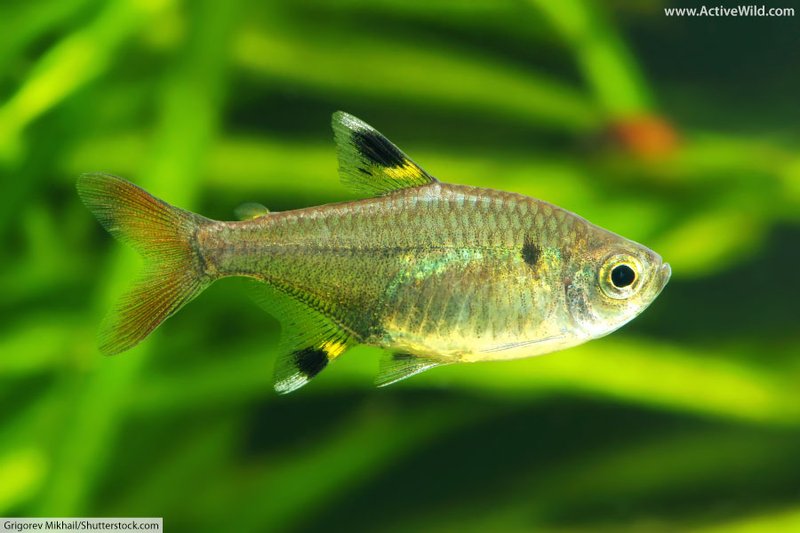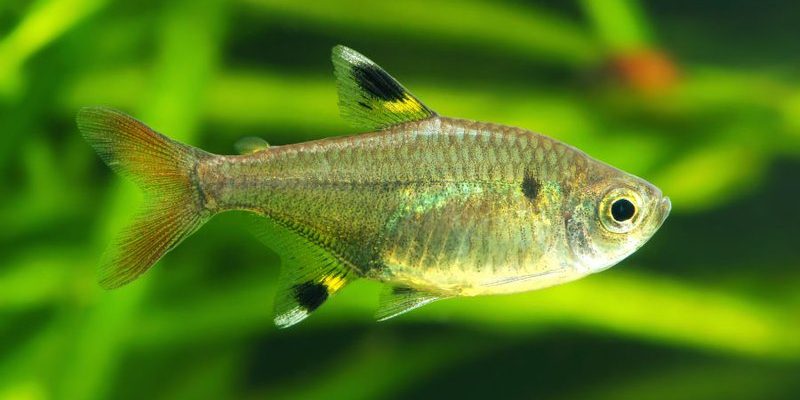
You might be wondering why the X-Ray Tetra matters. Well, every species, from the tiniest plankton to the largest whale, has a role to play. The X-Ray Tetra, with its unique characteristics and behaviors, contributes to the health and balance of marine ecosystems. Let’s dive in and explore the fascinating world of the X-Ray Tetra, uncover its role, and understand why its presence is significant.
Understanding the X-Ray Tetra
The X-Ray Tetra, scientifically known as *Pristella maxillaris*, is a small freshwater fish that comes from the Amazon River basin. It usually grows to about 1.5 inches long and is known for its transparent body, which is almost like nature’s own design feature. This transparency helps it evade predators, making it easier to navigate the bustling waterways it calls home.
These fish thrive in shoals, often swimming in groups of six or more. Being in numbers not only provides safety but also allows them to communicate with each other through various body movements. It’s a bit like a dance party where everyone’s in sync, working together to avoid danger while searching for food.
The X-Ray Tetra primarily feeds on small insects, crustaceans, and algae. This diet helps maintain the balance of the aquatic food web, and you’ll see why this matters soon enough.
The X-Ray Tetra as a Prey Species
In any ecosystem, every creature has a role to play, and for the X-Ray Tetra, that role often involves being a tasty snack. They are a crucial food source for larger fish, birds, and other aquatic animals. This makes them an essential part of the food chain in their habitat.
When larger predators eat X-Ray Tetras, they help keep the population of these little fish in check. Without such regulation, the X-Ray Tetra population could grow out of control, leading to overgrazing on algae and other food sources. This dynamic is a perfect example of the balance of nature—where even a small fish can impact the overall ecosystem.
Furthermore, the presence of X-Ray Tetras can indicate a healthy environment. Their numbers can reflect the state of the ecosystem, making them a valuable species for scientists studying water quality and biodiversity.
The Role of X-Ray Tetras in Aquatic Plant Life
You might not think of fish as gardeners, but X-Ray Tetras play a surprisingly important role in the health of aquatic plants. By consuming algae, they help keep algae growth in check. When algae grow unchecked, they can cover water surfaces, blocking sunlight from reaching the plants below.
This blockage can starve aquatic plants of the light they need to grow, disrupting the entire ecosystem. With X-Ray Tetras munching on algae, they help maintain a balance that allows aquatic plants to flourish and support other wildlife. So, as they swim and feed, they’re not just surviving—they’re promoting a thriving habitat for countless organisms.
Also, submerged plants provide hiding spots for X-Ray Tetras, allowing them to avoid predation while also contributing to the overall diversity and complexity of their environment.
X-Ray Tetras and Social Interactions
Social behavior is another fascinating aspect of the X-Ray Tetra. As I mentioned earlier, they are shoaling fish, which means they thrive in groups. This social behavior isn’t just about safety; it’s also about communication. X-Ray Tetras use body language to signal to each other, whether it’s warning about danger or attracting mates.
Within their schools, you’ll often see coordinated movements, which create a stunning visual display. It’s not unlike a well-rehearsed dance routine, showcasing the harmony of their community. Engaging in these behaviors strengthens social bonds and helps the group thrive together, as they work as a unit to navigate their environment and fend off predators.
The social dynamics of X-Ray Tetras can also impact their growth and reproduction. Fish that are kept in isolation may experience stress, which can affect their overall health and ability to breed. This further highlights their role, not just as individuals but as a cohesive part of a larger community.
The Importance of X-Ray Tetras in Research and Education
While X-Ray Tetras might be small, their role expands into the realms of research and education. These fish are often used in scientific studies due to their unique behaviors and physiological traits. Marine biologists study them to gain insights into fish behavior, social structures, and even environmental changes.
Moreover, their striking appearance and engaging behaviors make them popular in aquariums. They serve as an excellent example for educating people, especially kids, about the importance of biodiversity and the intricacies of aquatic ecosystems. By understanding and appreciating these fish, we promote awareness about conservation and the need to protect not just the X-Ray Tetra, but all marine life.
Education around X-Ray Tetras can spark curiosity and passion in the next generation of scientists and conservationists, ensuring that our oceans and rivers continue to thrive.
Conservation Challenges Facing the X-Ray Tetra
Despite their importance, X-Ray Tetras face various threats that can impact their populations and, consequently, their ecosystems. Habitat destruction, mostly from human activities like deforestation and pollution, seriously endangers their natural environments. As the Amazon River basin suffers changes, these fish struggle to find suitable places to live and breed.
Additionally, the pet trade can also put pressure on X-Ray Tetra populations. Overfishing for aquariums can lead to declines in wild populations if not managed sustainably. With a growing interest in aquatic pets, it’s crucial to encourage responsible sourcing practices that support wild populations while satisfying aquarium enthusiasts.
Conservation efforts are vital to ensure that X-Ray Tetras and the ecosystems they support continue to thrive. By raising awareness and promoting sustainable practices, we can help protect these fascinating fish and the broader aquatic environment.
The Future of X-Ray Tetras in Marine Ecosystems
Looking ahead, the role of X-Ray Tetras in marine ecosystems remains crucial. Their unique behaviors and contributions to the environment make them more than just a pretty fish—they are essential components of a balanced ecosystem. By understanding their role, we can appreciate the delicate interplay of life beneath the waves.
As we face challenges like climate change and habitat loss, the continued existence of species like the X-Ray Tetra will depend on our commitment to conservation and sustainable practices. It’s a reminder that every creature, no matter how small, has a role in the larger story of our planet.
So, the next time you see an X-Ray Tetra swimming gracefully through its aquatic home, remember the importance of this little fish. It’s not just part of the scenery; it’s a vital actor in the ongoing drama of life underwater.
In conclusion, the X-Ray Tetra embodies the complex interconnectedness of marine ecosystems. From their role as prey to their impact on plant life and their place in research and education, they remind us that every organism matters. By ensuring their protection, we support the health of entire ecosystems and foster a deeper understanding of our natural world.

